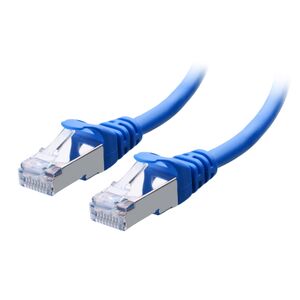We are still actively working on the spam issue.
Difference between revisions of "Home Server/Networking/Ethernet"
| Line 1: | Line 1: | ||
[[Category:Home Server]] | [[Category:Home Server]] | ||
[[File:Cat6a.jpg|thumb|right|A cat 6a Ethernet cable. Notice the shielded plating?]] | [[File:Cat6a.jpg|thumb|right|A cat 6a Ethernet cable. Notice the shielded plating?]] | ||
| − | |||
| − | + | Companion page to [[Home_server#Ethernet|the Ethernet section on the Home Server page]]. | |
| − | |||
| − | |||
| − | |||
| − | |||
==Ethernet CAT Specs== | ==Ethernet CAT Specs== | ||
Revision as of 19:39, 19 February 2024
Companion page to the Ethernet section on the Home Server page.
Ethernet CAT Specs
- Cat 5: This is an older type of Ethernet cable, capable of supporting up to 100 Mbps at 100 meters. It's not commonly used today due to its lower speed capabilities.
- Cat 5e: An enhanced version of Cat 5, it supports up to 1 Gbps at 100 meters. It's designed to reduce crosstalk, i.e., interference from adjacent wires. It's a common choice for home networks.
- Cat 6: This cable supports up to 1 Gbps at 100 meters or 10 Gbps at shorter distances (up to 55 meters). It has better insulation to reduce crosstalk and is suitable for business networks.
- Cat 6a: An augmented version of Cat 6, it supports 10 Gbps at 100 meters. It has even better insulation to reduce crosstalk.
- Cat 7: This cable supports up to 10 Gbps at 100 meters and has a higher frequency of 600 MHz. It uses a modified GigaGate45 connector, which is backward compatible with RJ45 Ethernet ports.
- Cat 7a: An augmented version of Cat 7, it supports up to 10 Gbps at 100 meters and has a higher frequency of 1000 MHz.
- Cat 8: The latest and fastest Ethernet cable, it supports up to 25 Gbps or 40 Gbps at distances up to 30 meters. It's primarily used in data centers where high-speed connections are required.
